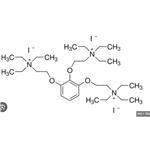Botulism, a disease of the nervous system in animals and
humans, was first recorded in Germany in 1735 and was
thought to be due to eating a tainted sausage. The name
botulism comes from the German ‘botulus’ for sausage. Botulinum
toxin (molecular weight of 100 000, consisting of 1300
amino acids) is derived from Clostridium botulinum – an
anaerobic spore-forming gram-positive bacterium commonly
found in soil. It can affect a wide range of animals, including
mammals, fish, and birds. There are seven serological varieties
of botulism denoted by the letters A–G. They are structurally
similar but antigenically and serologically unique. Only the
botulism types A, B, E, and F can cause toxicity in humans.
Types C and D can cause toxicity in animals. From 1990 to
2000, the US Centers for Disease Control documented 263
individual cases from 160 foodborne botulism events in the
United States; 4% of these resulted in fatality and 103 of these
cases occurred in Alaska. They were due to traditional Alaska
aboriginal foods, including the ingestion of raw whale fat or
muktuk. While the numbers of cases of foodborne botulism and
infant botulism are stable, the incidence of wound botulism
has increased due to the use of black tar heroin. California has
reported the majority of cases of wound botulism associated
with tar heroin use.








